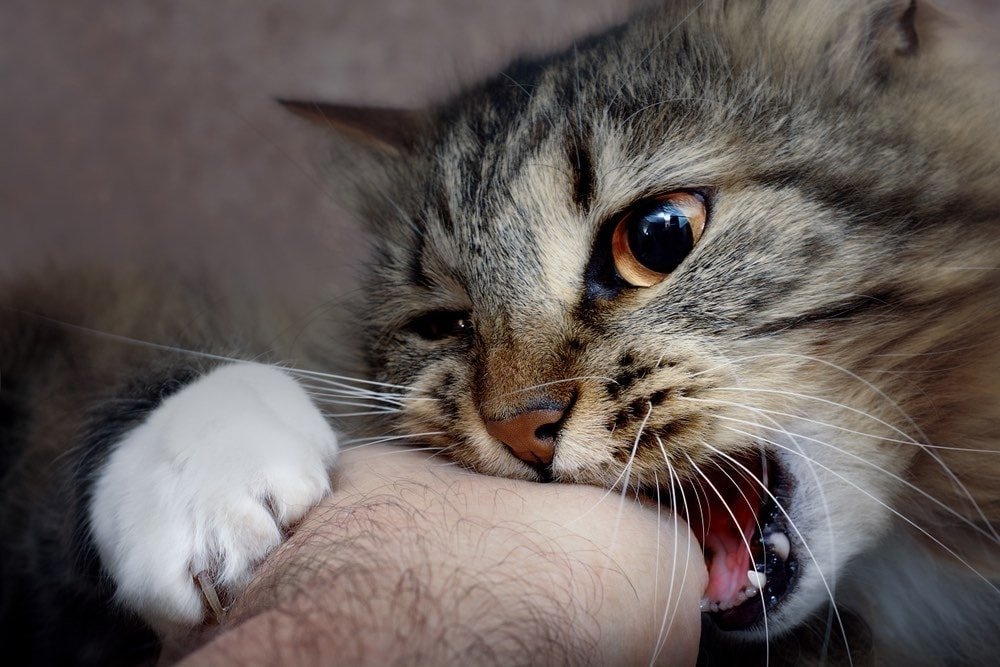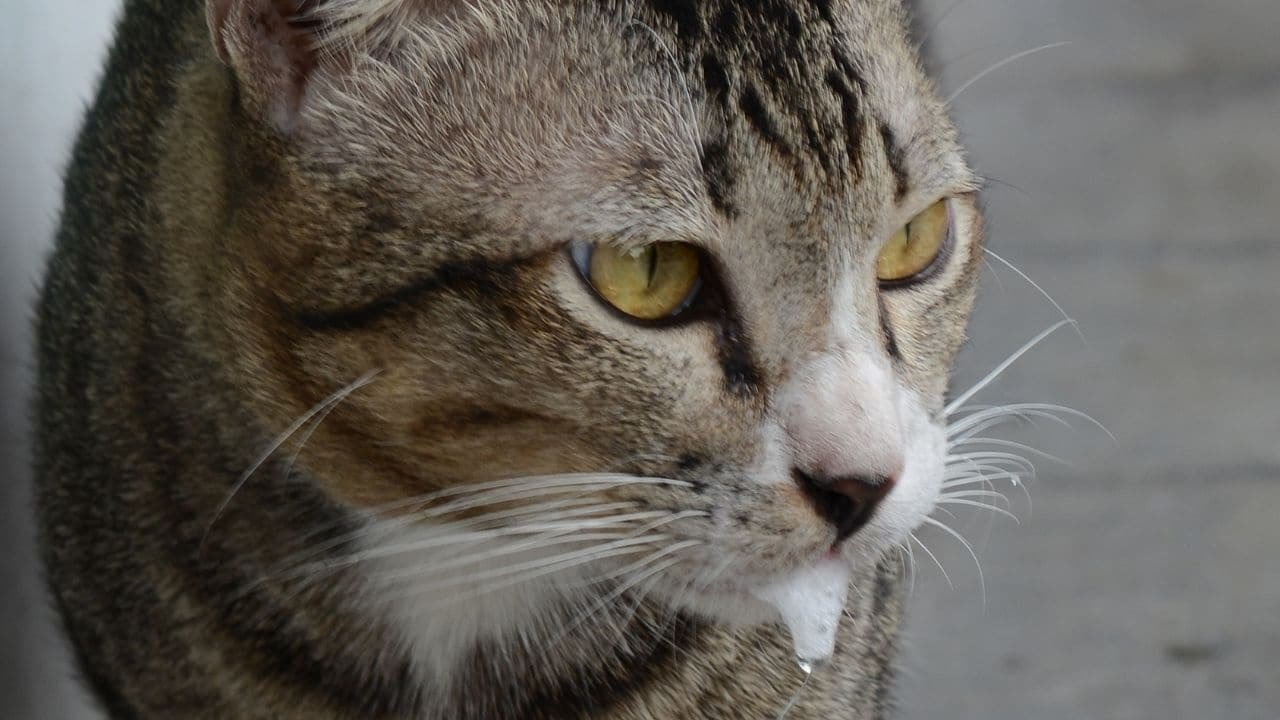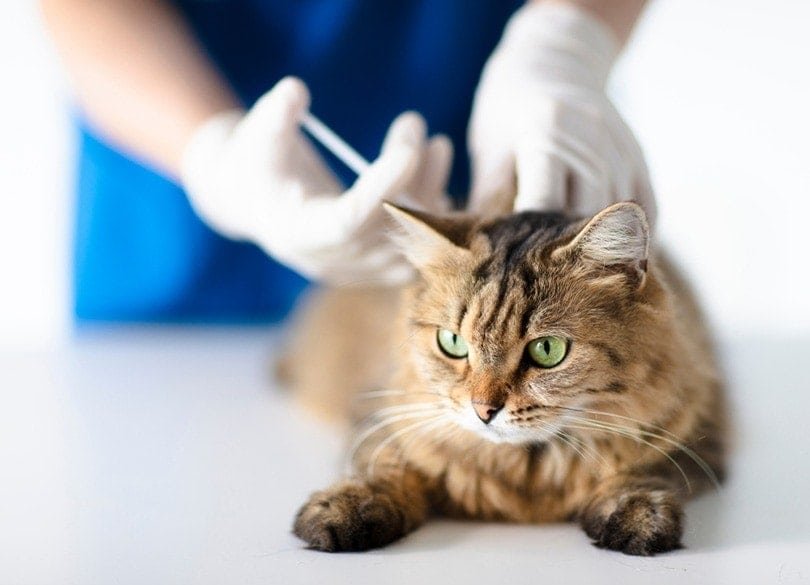Rabies in cats, also known as hydrophobia, is an acute viral disease characterized by severe damage to the central and peripheral nervous systems, ultimately leading to a fatal outcome.
Tragically, if rabies is diagnosed in a pet, it's crucial to understand that the disease is incurable. Infected animals are euthanized.
It's worth noting that hydrophobia is classified as a zoonotic disease, posing a severe threat to humans. All types of domestic animals, regardless of age or breed, are susceptible to this dangerous viral illness, including members of the feline family. Rabies is a terrifying disease, and neglecting the prevention of this dangerous viral illness is unacceptable, even if your domestic pet never leaves the confines of your home.
Ways of Infection
Rabies is a dangerous, highly contagious viral disease that affects warm-blooded animals. The virus is present in high concentrations in the saliva of infected animals. Infection occurs through the bite of healthy individuals, as well as when infected saliva comes into contact with damaged skin. Ingesting food contaminated with the virus is another route of transmission. Wild animals like wolves, foxes, raccoons, badgers, jackals, and rodents serve as the source of virus transmission.
After infection, the virus localizes at the site of entry for an extended period. It then spreads through the bloodstream to various parts of the body, penetrating nerve fibers, the brain, and the spinal cord, where it actively replicates. As the virus multiplies, irreversible changes occur, affecting nerve cells (neurons). Additionally, the virus moves to the salivary glands, other organs, and tissues within the body.
The virus exhibits resistance to low temperatures but rapidly loses its activity when exposed to UV rays, high temperatures, or disinfectants.

Symptoms and Forms of Rabies in Cats
The incubation period for rabies, from the moment of infection, ranges from several days to two to three weeks. The initial clinical symptoms may appear even months after infection. Infected animals are considered hidden carriers of the virus, posing a real threat to those around them.
The intensity and specific symptoms vary in each case and depend on the animal's resistance, age, mode of infection, and the form of rabies. When bitten deeply in the neck or head area, the disease can manifest within the first two to three days.
In veterinary practice, the following forms of this dangerous disease are distinguished:
1. Furious Form2. Paralytic Form3. Atypical Form
The most commonly diagnosed form of rabies in cats is the furious form, which includes three stages: the prodromal stage, the manic stage, and the depressive stage. The first stage can last up to three to four days, the second stage three to five days, and the third stage no more than two days.
The most characteristic symptoms include sudden changes in the cat's behavior, fear of water (hydrophobia), deterioration of the coat, dilated pupils, excessive salivation, impaired coordination, unsteady gait, involuntary muscle spasms and seizures, refusal to eat, consumption of non-edible objects, severe emaciation and weight loss, inadequate reactions to external stimuli.
The symptoms of rabies in cats worsen as the disease progresses. In the initial stages, a pet owner may notice changes in their cat's usual behavior. An infected cat may become very affectionate, constantly seeking attention, licking its owner's hands, or, conversely, a previously affectionate cat may start showing aggression without apparent reason.
During the second stage, there is a refusal to eat and an unusual reaction to external stimuli. Cats try to hide in dark, secluded places and meow intensely. They fear loud noises and, particularly, water. Even the slightest sound of water can cause severe distress in affected animals. Additionally, cats begin to lose their orientation in their surroundings and may become aggressive towards family members. Many cats attempt to escape from the home and do not respond to their owners' actions.
When the disease enters the depressive stage, cats become apathetic, lethargic, and depressed. Strong seizures and muscle spasms occur, leading to paralysis of limbs. Animals die as a result of respiratory failure or severe emaciation.

Paralytic and Atypical Forms of Rabies
The duration of the paralytic form ranges from several days to a week. The most characteristic symptoms include apathy, lethargy, and constant drowsiness. The cat does not react to external stimuli, refuses to play, and tries to avoid contact with the owner and other family members. Animals stop eating, drinking, and constantly hide in dark corners.
As the virus spreads throughout the body, coordination of movements is disrupted, and paralysis begins with the front limbs and then progresses to the hind limbs. Cats rapidly lose weight, leading to severe emaciation and intoxication, ultimately resulting in the inevitable death of the pets.
The atypical form of rabies is rarely diagnosed in veterinary practice. Furthermore, due to its non-specific symptoms, it's not always easy to recognize that a cat is infected with the virus. The disease manifests as a decrease in activity, gradual deterioration of the physiological condition, drowsiness, and apathy. An initially active and cheerful animal becomes less mobile, loses interest in the surrounding world, and refuses favorite treats. The disease can last from several months to half a year and ends with the death of the pet.
What to Do if a Cat Has Rabies
Unfortunately, it's not always possible to immediately recognize and diagnose the disease. The symptoms of this viral illness can be quite diverse. The diagnosis is made based on the patient's history and epizootic data for the region because suspected cases of rabies are not subjected to material analysis.
